Contents
 Problem Statement
Problem Statement
 Key Mathematical Concepts Key Mathematical Concepts
 Approach Approach
 Principle Findings and Results: Principle Findings and Results:
 Area Area
 Segments Segments
 Angles Angles
 Related Site
Related Site
http://jwilson.coe.uga.edu/emt669/essays/concurrent.html
Problem Statement
Given a triangle in which line segments are constructed,
by connecting each vertex to the opposite sides’ trisection points, make as
many observations as possible, concerning various areas, angles, and
segments. State a formal conjecture for each of the observations and prove at
least one of them.
Key Mathematical
Concepts
Formal Geometric Proofs
Invariance of areas under transformation
Invariance of the ratios of segments, areas, and angles under
transformation
Approach
The basic approach is one of "play". Make a
guess about some relationship that might be true. Use the calculator to list
a measurement or ratio of measurements. Drag a vertex around, causing the
triangle to cycle from acute to obtuse. Do the same with each vertex. If the
listed measurement remains constant, then the relationship selected is
invariant. The following observations will be divided into areas, segments,
and angles.
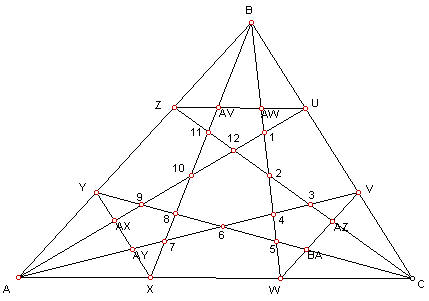
Principal
Findings and Results
Area:
The triangle contains four primary shapes:
- hexagon- 2,4,6,8,10,12
- pentagons- U123V=
XW567= ZY9,10,11
- vertex triangles-
BZ,11= BU1= AY9= A7X= 5WC= CV3
- free triangles-
10,11,12= 12,1,2= 2,3,4= 4,5,6= 6,7,8= 8,9,10
- quadrilaterals-
B,10,11,1= A987= C345
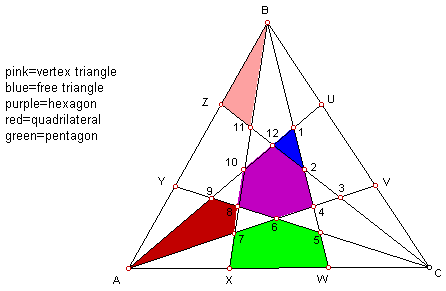
All other shapes are obtainable by adding various combinations of the
above five shapes.
All pentagons have the same area. All vertex triangles have the same area.
All free triangles have the same area. All quadrilaterals have the same area.
Like combinations, (for example CYA=UAB, three vertex triangles plus a
pentagon plus a free triangle plus a quadrilateral), will have the same
area.

Ratio of Areas:
Triangle ABC divided by a hexagon = 10.
Triangle ABC divided by a pentagon = 9.55.
Triangle ABC divided by a vertex triangle = 21.
Triangle ABC divided by a free triangle = 70.
Triangle ABC divided by a quadrilateral = 14.
Also the various permutations of the different figures above are
obtainable
(for example, hexagon divided by free triangle = 7).

If one constructs segments ZU, YX, and VW:
a) Triangles BZU, YAX, VWC, UVAW, ZAWY, AWWX, UZAW, VAWW, and AWYX are
congruent, so their areas are equal.
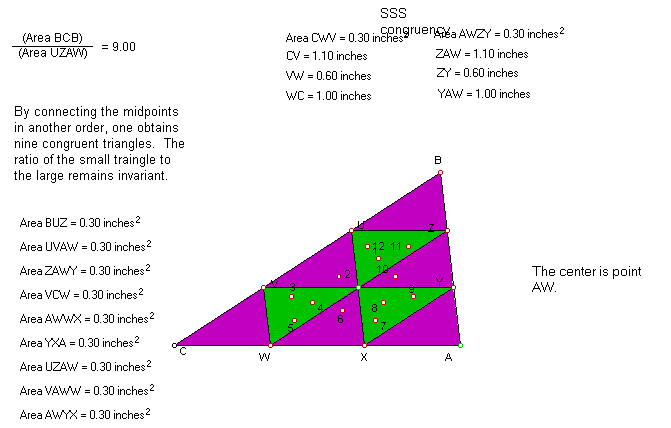
b) Additionally, three stars are formed which are of equal areas-
B,AV,Z,11,10,12,2,1,U,AW
10,9,Y,AX,A,AY,X,7,6,8
2,4,6,5,W,BA,C,AZ,V,3
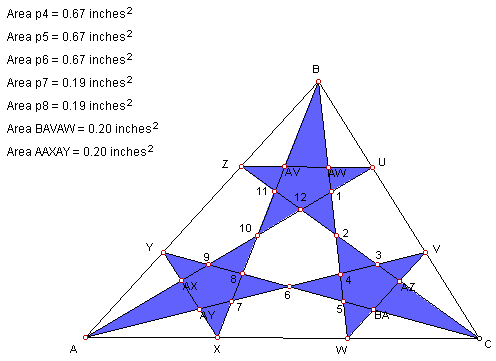
With additional segments created, more triangles can be found to have
equal areas:
ZUV, VXW, XZY and YUV, UWX, WZY.
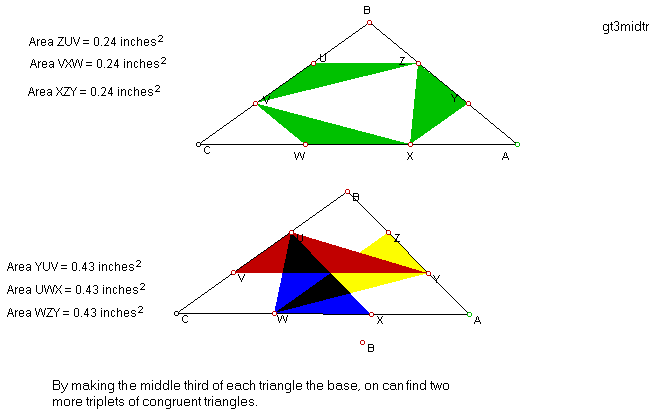
The hexagon can make two triangles inside it, by connecting every other
vertex. The ratio of the area of these triangles to the larger triangle
remains invariant under transformation.

Segments:
There are three sets of eight parallel lines in the
triangle
Any two sets of corresponding parallel lines are in equal ratios.

By following a pair of trisectors to their end, the ratios
of the sides that are split by the first segment they intersect remain
invariant under transformation. Since the basic parts are in the same ratio,
then all like additions of the parts, to create longer sections will also be
in proportions that are invariant.
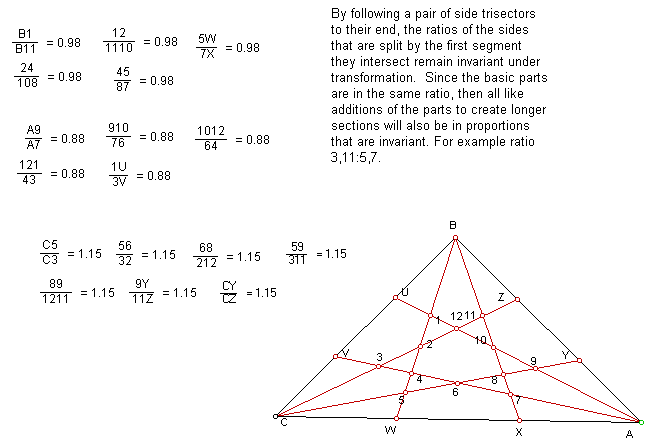
The ratio of the perimeter of the triangles contained within the hexagon
to the large triangle remains invariant under transformation.
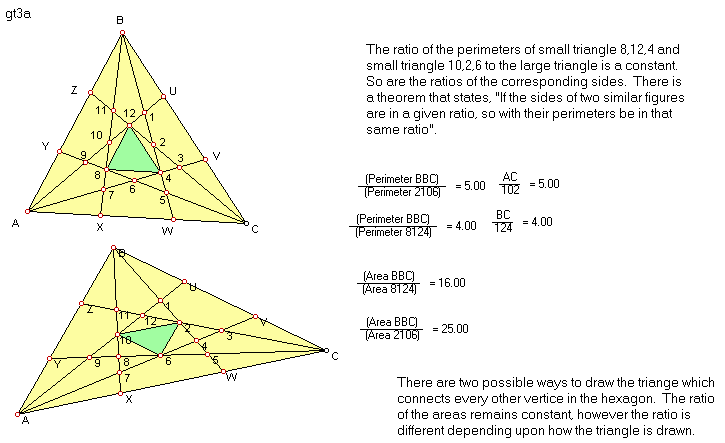
The perimeters and the corresponding sides of the nine
congruent triangles are equal.
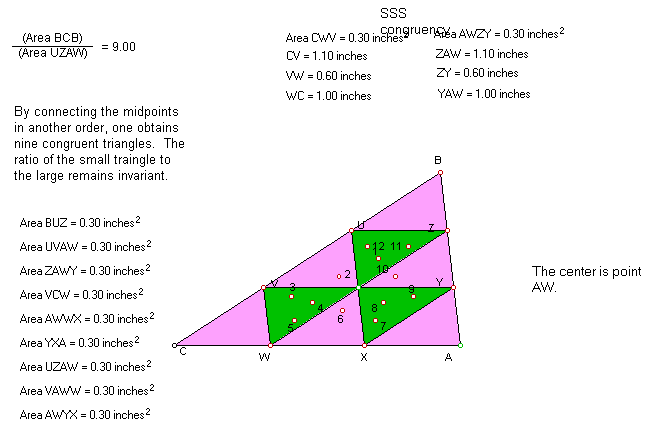
Angles:
For all the above sketches, if two or more figures are
said to be similar or congruent, then their corresponding angles are
congruent. All vertical angles are congruent to each other. In the parallel
sketch alternate interior and exterior angles are congruent, as are
corresponding angles.
|